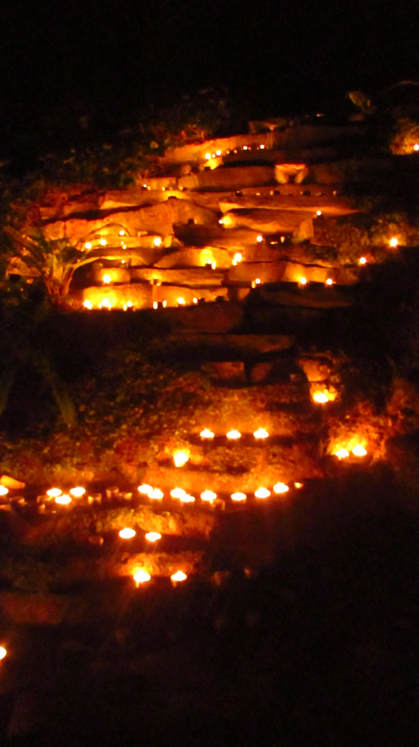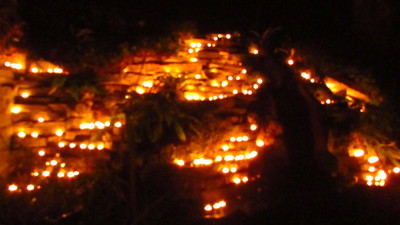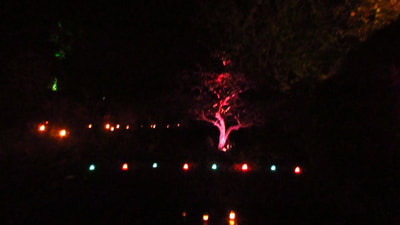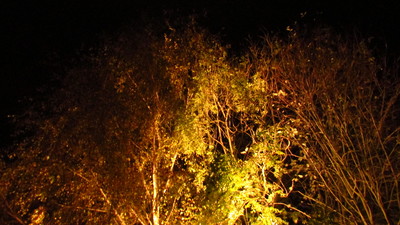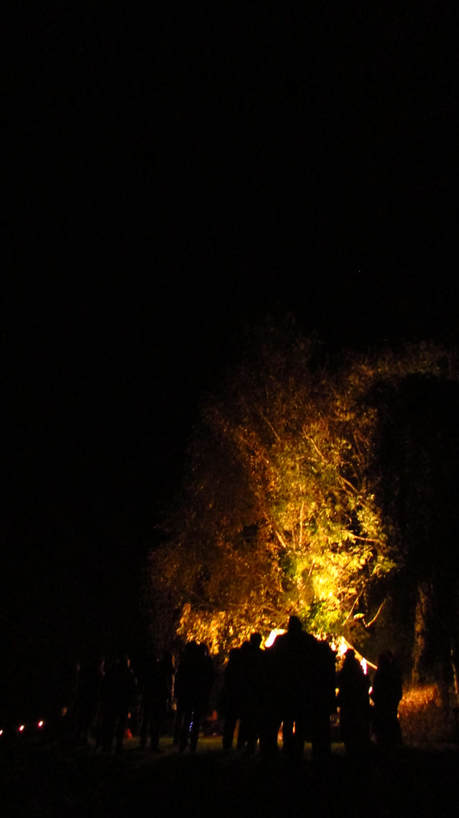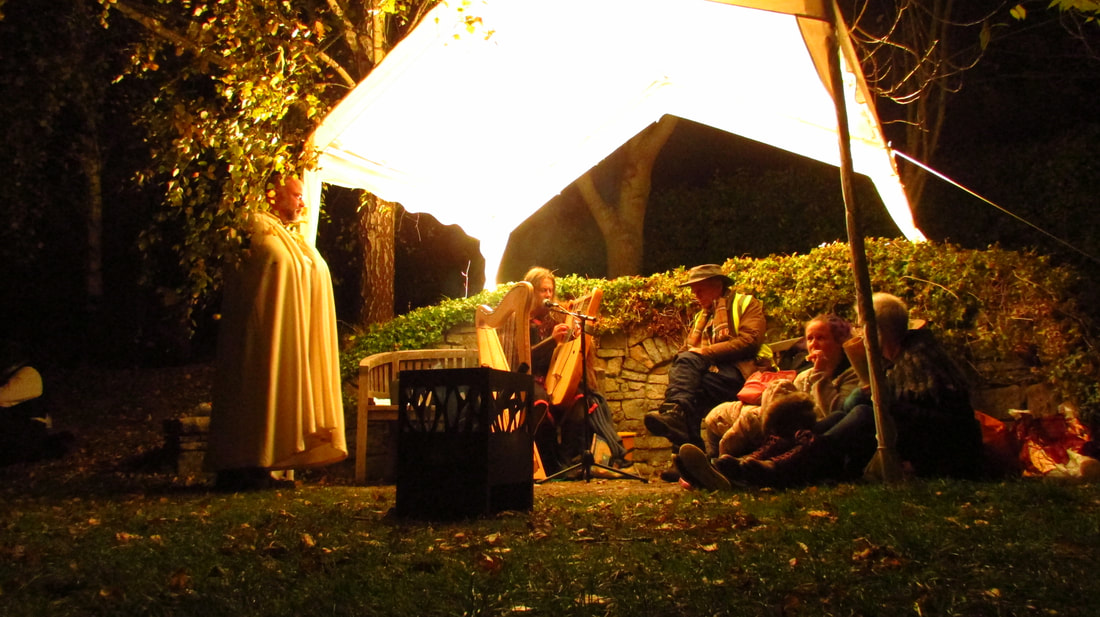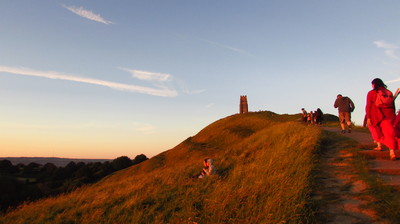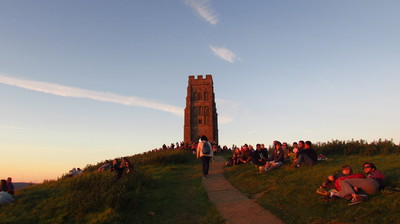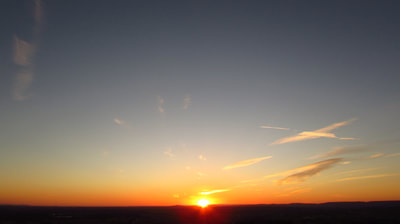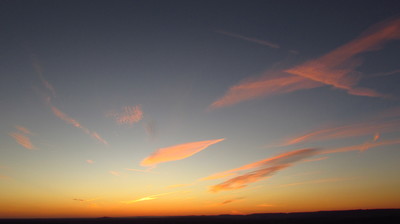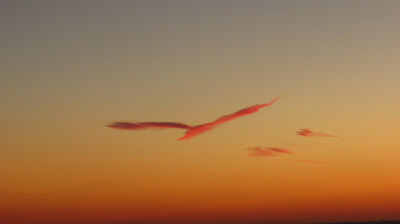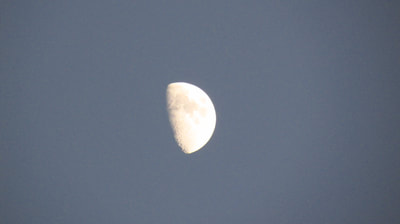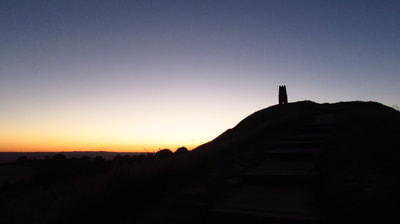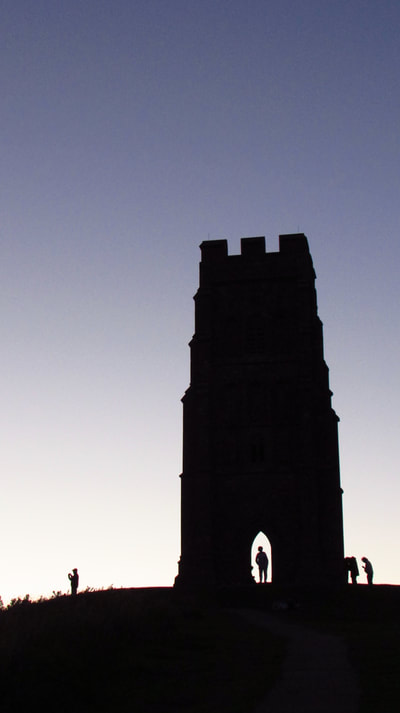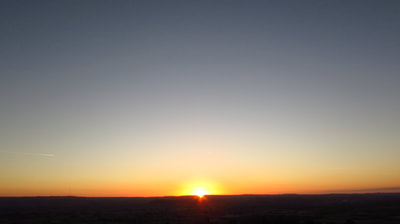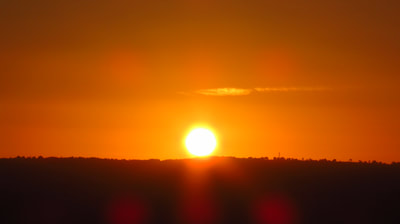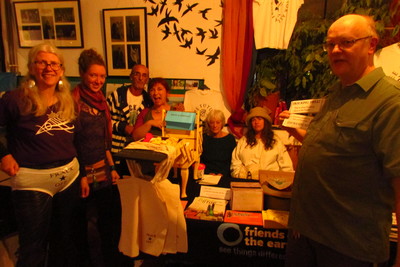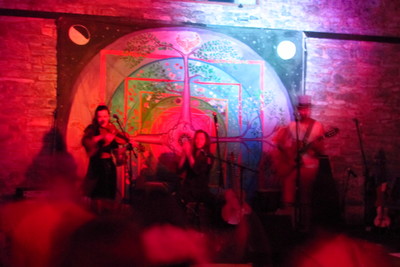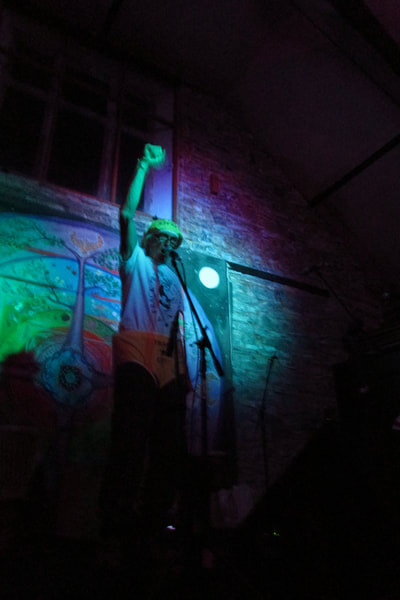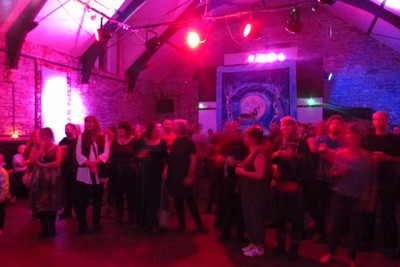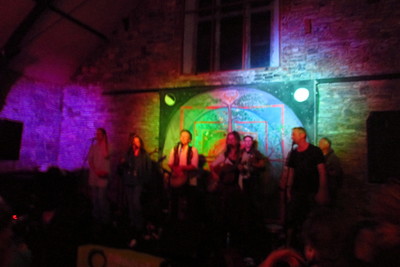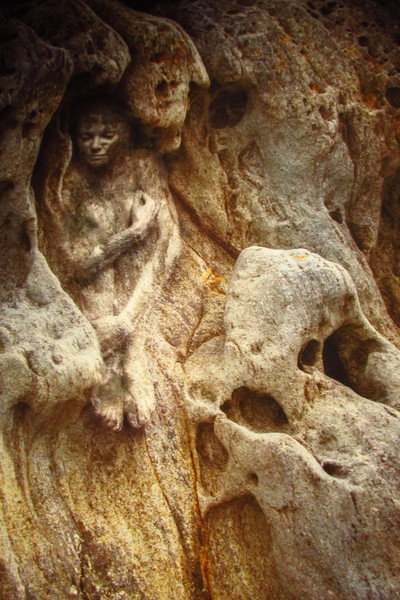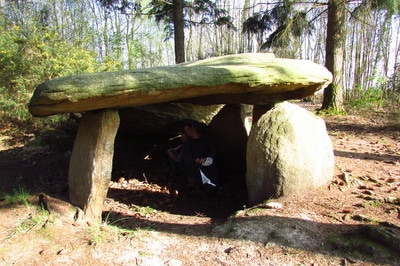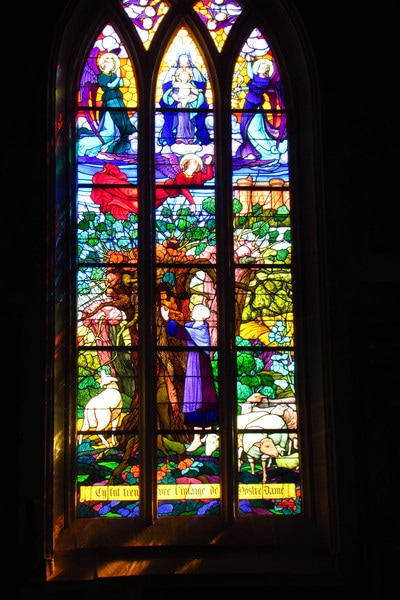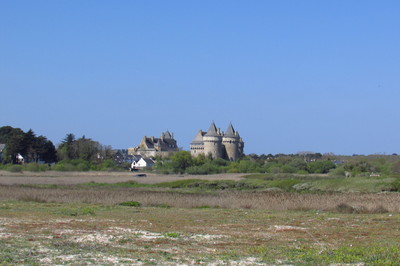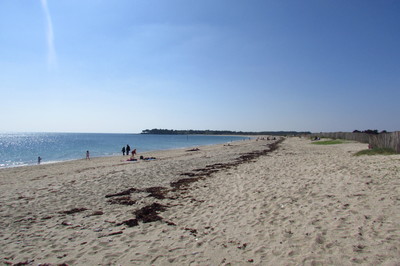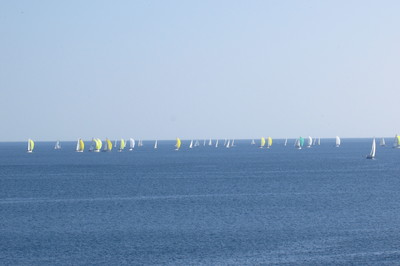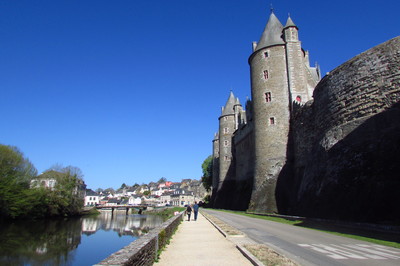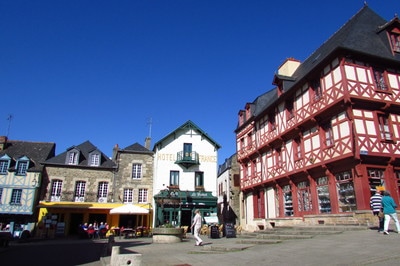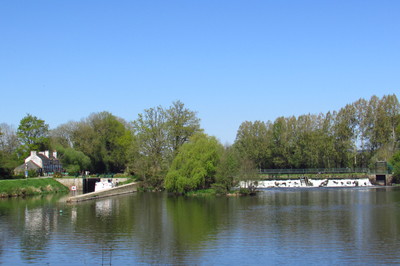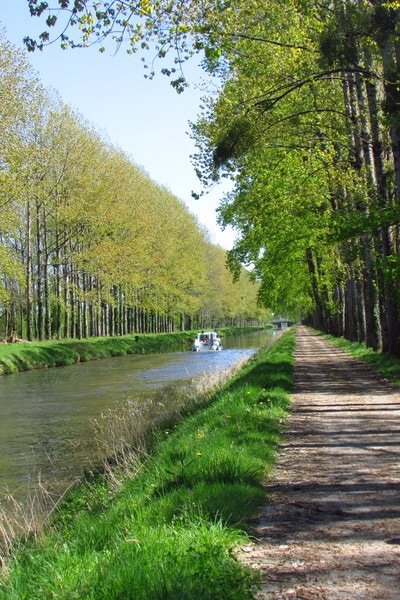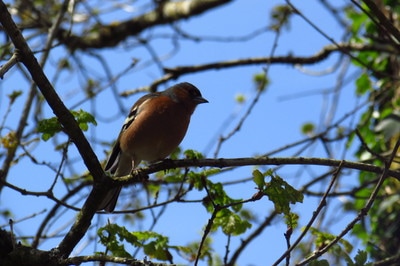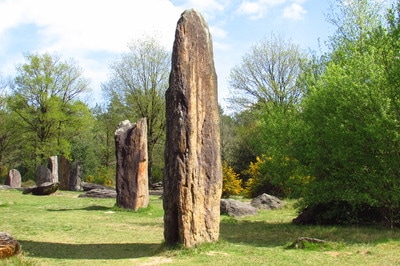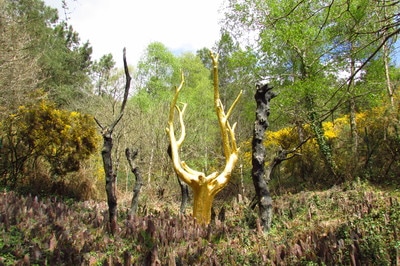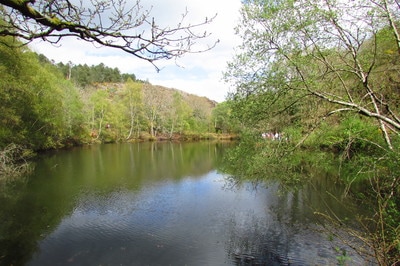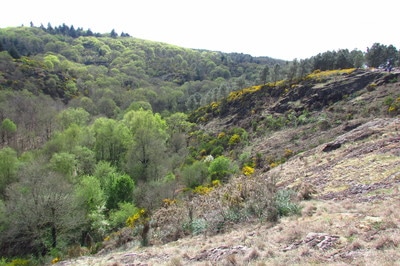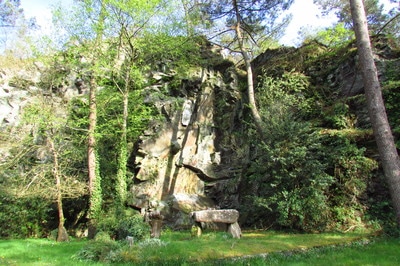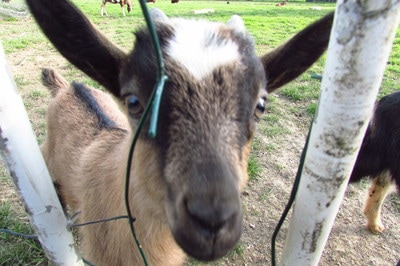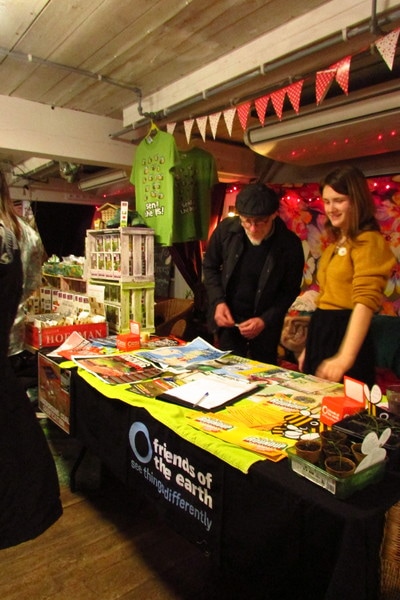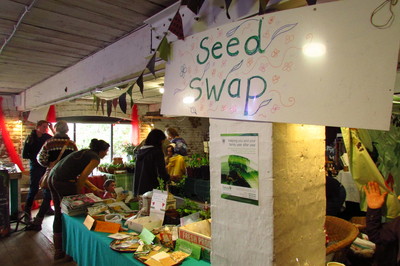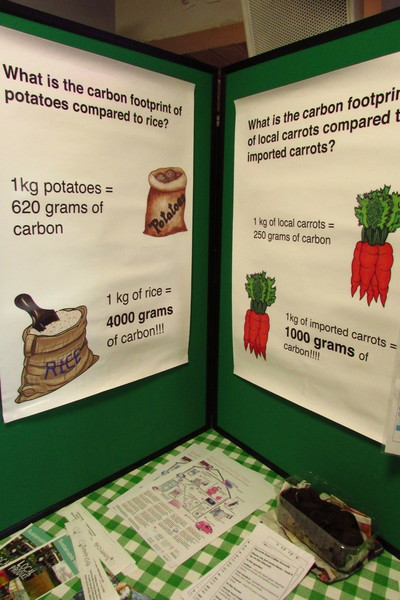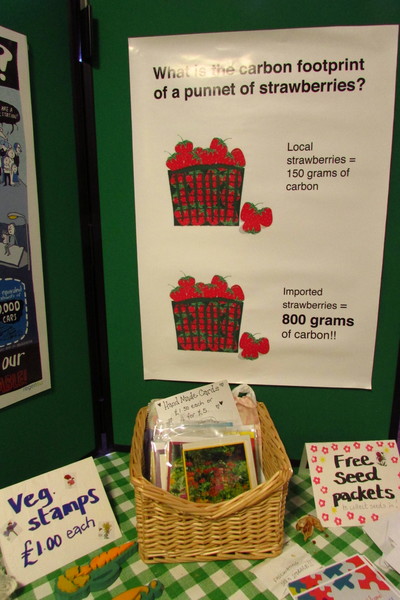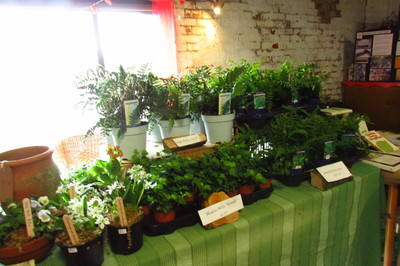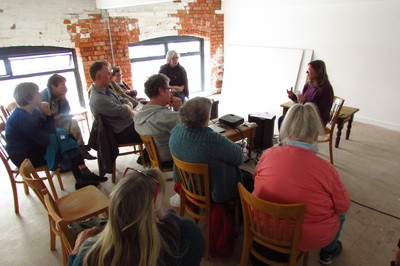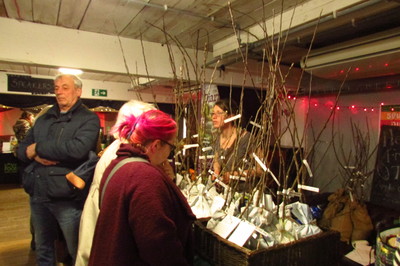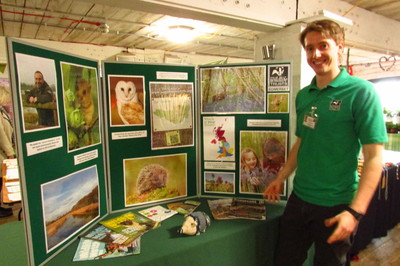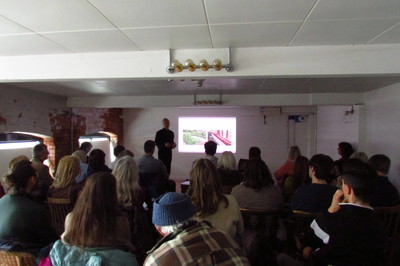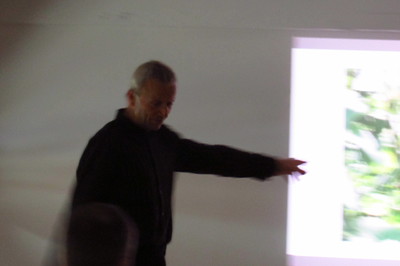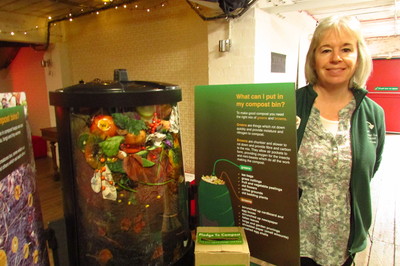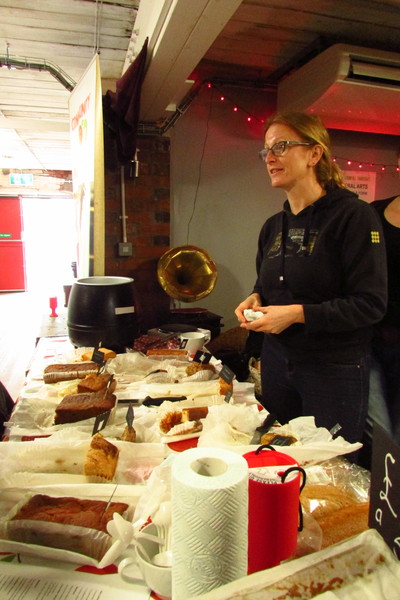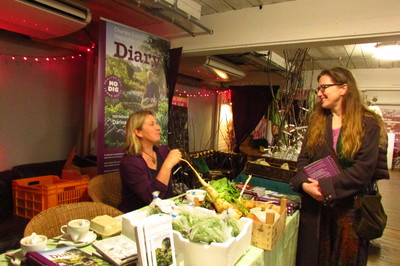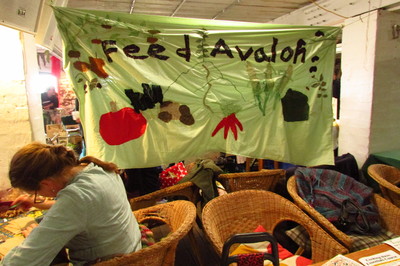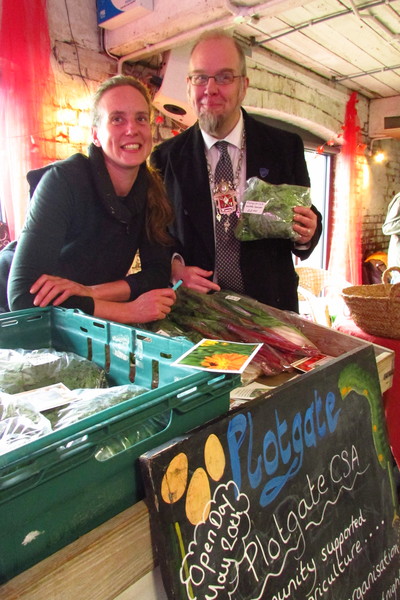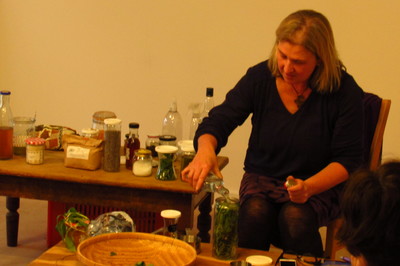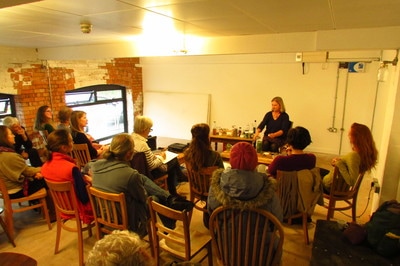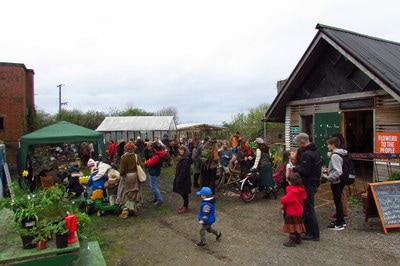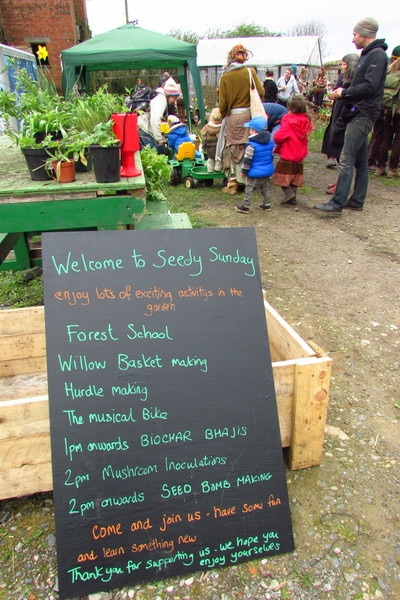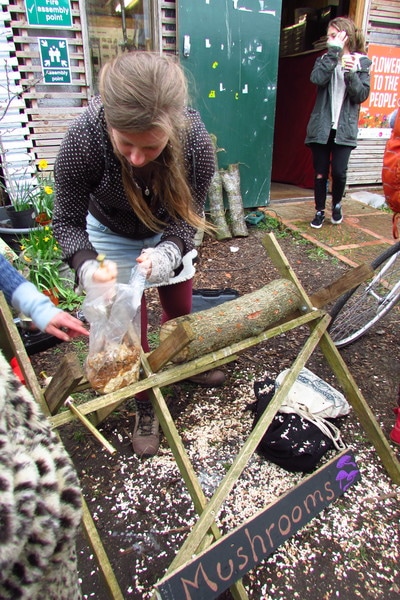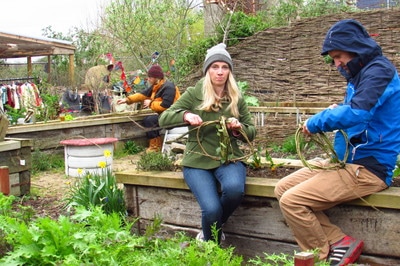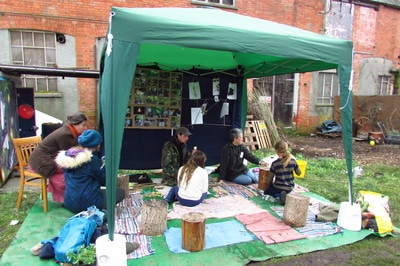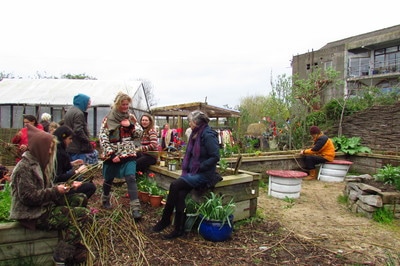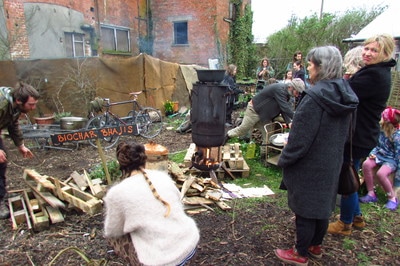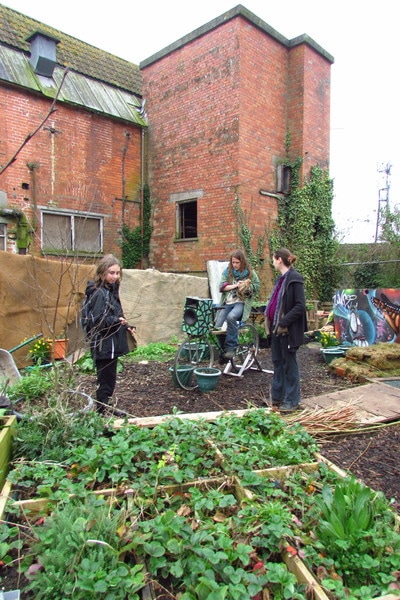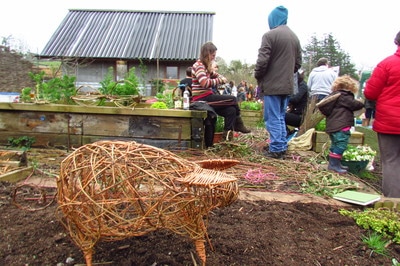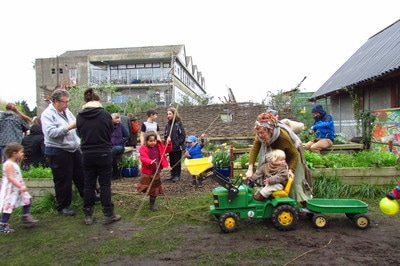|
One night in Avalon town, the gardens of the Chalice opened their doors, and to all they welcomed, with light and fair music, such as fairies dance to. This was the night of the dead, when the ancestors, who created the earth beneath our feet, who fed the soil and allowed new life to grow, came to be honoured and upon them we bestowed, Samhain blessings and offerings to the waters. We sat by the well and we listened to the water, We watched the flickering lights against the darkness, We wondered at the stars, shining so bright, We felt the cold, on this dark night, We lit ourselves up with the songs of the harp, All painted with unicorns, the magic that musician spun, Danced inside us, so that we remembered, Exactly what it means to be ALIVE A child came and she gave us chocolate, We played with her elephant toys, We warmed our hands by the fire, And the musician gave us the greatest gift of all: A chance to play on his unicorn harp. A cherished moment in my memory for ever, A reminder of what we can do, that everything can be learned. A reminder that nothing begins or ends, That Samhain, All Hallows Eve, is a day of transformation, That death is only the beginning of new life. Long live living, if living can be this...
0 Comments
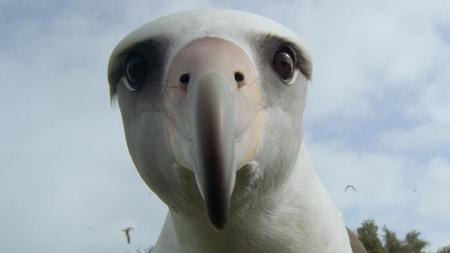 On Saturday 20th October myself and the Glastonbury Friends of the Earth group hosted a film showing of the meditative arts film, Albatross. Shot over 8 years on the remote Pacific island Midway, film-maker Chris Jordan found himself drawn into the lives and losses of the legendary Albatross birds. The movie is an intimate and personal look at how their lives are affected by ocean plastic, which the parents scoop up, along with nourishing food, to feed to their babies. The parents can't know what plastic is, but trust that the sea provides what they need- every molecule of their bodies comes from the sea, there is no separation between them. When you see the care and concern the parents lavish on their babies, it is very difficult to see them as different from us- they do everything with the same love and intention as we do. This makes the images of the dead chicks, bodies filled with plastic, the more heartbreaking. Before showing the film, I began with an introduction discussing the views of Llewellyn Vaughn-Lee, sacred activist and Sufi writer. He says that for us to create real change in this world each of us must go through 4 stages, that he calls his four point-plan. The first point is witnessing: having an awareness of what is happening in the inner and outer worlds. A state of awareness that sees without judgement, expectation, or even without wanting anything to change. When we witness what is happening within ourselves while watching this film, as well as what is happening on screen, we will notice how everything is connected. ''Everything is happening in our backyard, and we need to hold an awareness of what is happening- like a light shining in the darkness''. Secondly is grieving: each of us feels this differently, so there is no judgement to your reactions while watching this film. Chris Jordan said he ''came to discover that grief is not sadness. Grief is love. Grief is a felt experience of love for something lost or that we are losing. That is an incredibly powerful doorway. I think we all carry that abiding ocean of love for the miracle of our world''. Thich Nhat Hanh says: ''real change will only happen when we fall in love with our planet''. Thirdly is praying: ''Prayer is the soul's most basic response''- the cry to our deities in times of distress. This primal cry is also the Earth's prayer: Earth is crying out through our voices. Earth needs our prayers now. Maybe whilst watching this film you will feel the urge to pray, to whichever deity or deities you connect with, to the Earth, or to the birds themselves. Earth thanks you for your prayers tonight, because perhaps these problems are too big to fix ourselves; we need our gods and goddesses now. Lastly is action: once through these three stages, then can we act from a place of love, not conditioned by the same mind-set as that which created the problem in the first place. There are many ways in which to act, but remember that just watching this film with us tonight is also an action. If anyone reading this feels called to show this film, you can download it and find all details at: www.albatrossthefilm.com/ Feel free to use my introduction, or write your own. This is a powerful and emotional film, I felt a lot of grief watching it for the first time, which was strong for me throughout the next day. That evening I went to watch a wonderful singer called Ayla Nereo, who spoke about the fear and despair of climate change, and how for her, witnessing the news and how our world is instills in her a sense of bravery. That is exactly what this film did for me: I have never felt braver to stand up against the over-production and unnecessary use of plastics, and to do what I can to clean up this planet. The first step is for our Friends of the Earth group and others to make Glastonbury single-use plastic free. To get involved please email: [email protected] or find us on Facebook: Glastonbury Friends of the Earth. Earth thanks you x I did a student observation of the sky for my uni work, focusing on Summer Solstice at Glastonbury Tor. I saw the sunset on the 21st and sunrise on the 22nd. Here is what I discovered through my research, and some of my photos.
Summer solstice is on Thursday, 21 June 2018, 11:07 in Glastonbury. In terms of daylight, this day is 8 hours, 41 minutes longer than on December (Winter) Solstice. Earliest sunrise is on 17 June. Latest sunset is on 25 June. Solstices in Culture Over the centuries, the June solstice has inspired countless festivals, midsummer celebrations and religious holidays. One of the world's oldest evidence of the summer solstice's importance in culture is Stonehenge in England, a megalithic structure which clearly marks the moment of the June solstice. In the Southern Hemisphere, where the June solstice is known as the shortest day of the year, it marks the first day of astronomical winter, but the middle of winter in meteorological terms. Celebrations all day in Glastonbury – dawn at the Tor, midday at the Chalice Well Gardens, and sunset at the Tor Daylength 21st: 16:34:20 – 0.02 seconds longer than the 20th Daylength 22nd: 16:34:17 – 0.03 seconds shorter than 21st = longest day! “Solstice” (Latin: “solstitium”) means sun-stopping. The point on the horizon where the sun appears to rise and set, stops and reverses direction after this day. On the solstice, the sun does not rise precisely in the east, but rises to the north of east and sets to the north of west, meaning it's visible in the sky for a longer period of time. Time after sunset & before sunrise is ‘Civil Twilight’ 21st: 04:08 to 04:55 and 21:29 to 22:16 Civil Twilight As the Earth's atmosphere scatters and reflects much of the Sun's rays, coloring the sky bright yellow and orange, artificial lighting is generally not required in clear weather conditions to carry out most outdoor activities. Only the brightest stars and planets, like Venus and Jupiter, can be seen with the naked eye. Nautical Twilight In clear weather conditions, the horizon is faintly visible during this twilight phase. Many of the brighter stars can also be seen, making it possible to use the position of the stars in relation to the horizon to navigate at sea. This is why it is called nautical twilight. Nautical twilight 21st: after civil twilight 22.16 to 23:28 Nautical twilight 22nd: before civil twilight 02:56 to 4.08 Astronomical Twilight To the naked eye, and especially in areas with light pollution, it may be difficult to distinguish astronomical twilight from night time. Most stars and other celestial objects can be seen during this phase. However, astronomers may be unable to observe some of the fainter stars and galaxies as long as the Sun is less than 18 degrees below the horizon – hence the name of this twilight phase. Astronomical twilight 21st-22nd: 23:29 to 02:56 Today does not get darker than astronomical twilight (after which is night) Twilight Around the Poles At high latitudes and around the summer solstice, the Sun does not move lower than 18° below the horizon, so twilight can last from sunset to sunrise. The area experiencing all-night astronomical twilight around the summer solstice lies between about 48°33′ and 54°33′ North and South. In the northern hemisphere, this roughly correlates with the area between locations just south of the US-Canadian border and Canadian cities like Edmonton, Alberta. In Europe, it covers much of Germany – and the UK apparently! www.timeanddate.com The sun sits still for three days from today. A time for stillness, reflection, and silence. The Starlings say it best. Blessings on this winter Solstice... On the 7th October a whole community of people from Glastonbury and beyond got together to celebrate the successes of Frack Free Movements, and to raise money to support them in solidarity. 3 bands: Bex (formly of Ten Ton Tongue), an incredible guitarist that had all the children up dancing; Invisible Gem, a folk trio with an epic violinist; and Seize the Day, who formed during the '90s road protests and are still going strong, singing about all things real! This little video will show how much Seize the Day rocked the night away... to an incredible crowd with an electric energy... ''I will never rest, until all oppression is ended...'' Our Friends of the Earth group were wonderful. selling Frack Off pants, vegan Frack-Jacks, cards that open with a 'BANG' to show how the Earth reacts to fracking, and t-shirts designed by our very own Carla, who began the Glastonbury Friends of the Earth group back in February. We had a representative from Frack Free Somerset there, and reps from the Avalon Community Energy group, a local energy co-op. We ran a very successful raffle, and had a speaker who had come from Preston New Road, the anti-fracking protector site, to deliver a very special message. Our charismatic compere, Ronny, got the crowd going with his Australian personality: he was part of the frack free Lock-The-Gate movement at Bentley, which the movie The Bentley Effect was created about. In total we raised a whopping £1285.82 for the protectors at Preston New Road anti-fracking site in Lancashire. And through the raffle and sales we raised £337 for the Glastonbury Friends of the Earth group, to allow us to continue raising awareness of the dangers of fracking and what we can do about it. The main thing when it comes to fighting the fracking industry
is to remember what we are fighting FOR... our safe water, our clean air, our health, our environment and our COMMUNITY. The fundraiser reminded me how much of a wonderful community we have in Glastonbury, the energy of change was truly upon us on Saturday night: long may that continue. Thank you for standing up and dancing with us! I created a video about nature and humanity seen in the architecture and art of Wells Cathedral. I work in a very beautiful place, please enjoy these images. Bastille Day is a national holiday in France, celebrating this day in 1789. The day that the population rose up, beginning the French Revolution, overthrowing corrupt King Louis XVII and his wife Marie Antoinette, and storming the Bastille Prison to free it's prisoners... Vive Le France!! Here is a video I created about one of my favourite countries on Earth, and all it's beauty... Happy Bastille Day! I have the best of blessings that my parents live in a beautiful part of the world, Brittany in France. Here are some of the reasons we love it so much...
I had such a fantastic day yesterday at the Seedy Sunday Seed Swap in Glastonbury. I was part of the organisation of the event, mostly doing the social media, and volunteered all day .
It was a great success and everyone seemed to thoroughly enjoy it and it's plant-y mayhem! We had many stalls, selling eco-friendly products, crafts and plants. Promotions tables included Friends of the Earth, Wildlife Trust Somerset and composting champions. We had foraged soup and plenty of homemade cakes to keep us going. We heard talks from Carol Stone about How to Save your Seeds, Charles Dowding on No-Dig Gardening, and Steph Hafferty on Potions from the Garden. And a movie showing by Paul Stamets on how mushrooms will save the planet! Outside we had mushroom log inoculation, willow basket weaving and fence making, activities with the Forest School, and a musical bike (the speaker powered by peddle!) There were also onion bhajis being cooked by biochar. And of course, the Seed Swap itself, which was very successful. I myself got some seeds, so now its time to get planting! Enjoy the photos... I went to a fantastic talk at the Avalon Rooms in Glastonbury, by archaeologist Peter Knight. He has written many books including work on West Kennet Long Barrow near Avebury, and on Symbolism taken from paganism by Christianity. But tonight he gave a talk to promote his book Dartmoor Mindscapes, talking about Dartmoor, Southern England's last wilderness. Peter has explored Dartmoor on foot in many weathers, saying that he can walk the same route many times, but every time is unique, every time there is something new. And he has found many new, previously undocumented features.
One thing he noticed is that many of the ancient stone circles and rows point to one of the many Dartmoor tors. There are alignments all over the place! And he noticed that the ancient sites were usually placed in the exact spot where the most tors could be seen. 50 metres away one or other of the tors may drop out of sight behind a rolling hill. Visiting these various tors, Peter noticed and photographed many intriguing rock features, such as faces of giants, dragons, pixies, and old women. He describes how people long ago, when they lived here, may have seen these features and taken for granted that these were actually giants, dragons and so on. The landscape literally gave people their myths and legends. One thing he emphasised was that it matters not whether people did actually see things the way we do now (metaphorically not literally: the rocks have maybe weathered a few inches, but the shape would have been exactly the same in Neolithic times), what matters is how we experience the landscape now. There is nothing to say that the people then didn't feel the same magic and awe that we do now. Peter recommends experimenting with 'how it feels to do something' in the landscape... lay under a rock in a tight space that looks as though it will fall on you; squeeze into a cave and drum your heart out; stand naked on top of a tor. Go on, dare you! Find out more about Peter's talks, books, guided shamanic-style walks around Dartmoor, and more, visit his website: www.stoneseeker.net |
